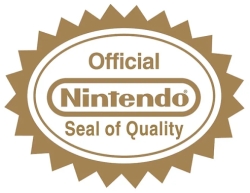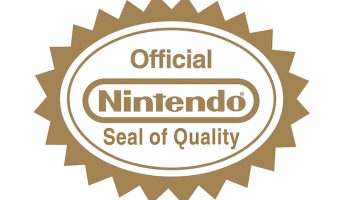 “Not all who wander are lost.”
“Not all who wander are lost.”
You don’t see it much anymore, but this quote, from JRR Tolkien, was a popular sentiment to plaster on your bumper from the 1970s all the way up to the 2000s. While they may not be lost, like any art form, the video game world has its share of wandering artifacts that are certainly hard to find.
We’ll look at some of them (including Sega’s Heavyweight Champ, GoldenEye 007‘s legacy of screencheating, and the Nintendo Seal of Quality) in this edition of Bite-Sized Game History.
![]() You can find a lot of dedicated video game historians on Twitter, and in 280 characters or less, they always manage to unearth some amazing artifacts. Bite-Sized Game History aims to collect some of the best stuff I find on the social media platform.
You can find a lot of dedicated video game historians on Twitter, and in 280 characters or less, they always manage to unearth some amazing artifacts. Bite-Sized Game History aims to collect some of the best stuff I find on the social media platform.
Many players have fond memories of the games they first discovered during the Golden Age of Arcade Games. But for every Space Invaders or Asteroids cabinet that’s still playable in 2022, dozens more were confined to the local junkyard after their time was up. And that means that a lot of games, like Sega’s Heavyweight Champ from 1977, are simply unavailable because the internal components weren’t preserved and emulated.
So we have to find other ways to interact with these “lost” artifacts… such as rediscovering a vintage news report recently shared by Ethan Johnson, Kate Willaert, and Ken Horowitz.
Attributing its popularity to the public’s desire for more boxing after the release of Rocky, Heavyweight Champ was front and center during a visit to San Diego’s Sega Center arcade (which was pronounced see-gah by the reporter). Other games were also on display, but it was the first one-on-one fighting game ever created that got the most screen time:
Pointed out by @GameResearch_E in @GamingAlexandri Discord, a recently uploaded 1977 news clip features some rare footage of un-emulated arcade games from the period. Most notably, our first real look at gameplay from the first video fighting game, Sega's Heavyweight Champ. pic.twitter.com/QRhbwaQBHw
— "Critical Kate" Willært ?? (@katewillaert) April 8, 2022
Putting Ann Landers, Dear Abby, Emily Post, and Miss Manners in front of an N64 loaded up with GoldenEye 007 would have produced a deathmatch for the ages. But it also probably would have spawned a fantastic debate about the etiquette and appropriateness of screencheating.
Let me back up for those who aren’t familiar with splitscreen multiplayer. Before online multiplayer became the norm, local multiplayer was the best way to play an FPS deathmatch against your friends. And it was called splitscreen because your television screen was literally split into four quarters, giving each player a very small piece of real estate.
This presentation was perfect for screencheating, which involved glancing at your opponent’s quarter and trying to determine where they were on the map. Most players weren’t fans of screencheating (thus the name), but resigned themselves to the fact that it couldn’t really be stopped. What were you going to do? Not play GoldenEye 007 (or Mario Kart 64, for that matter)?
But what if there was a way to truly split the screen… onto four separate TVs… in GoldenEye 007? It can be done! So long as you have thousands of dollars worth of specialized video equipment and an expert who knows what they’re doing.
Back in May, the Centre for Computing History created just such an installation for their “25 Years of GoldenEye” celebration, and attendees had the chance to experience the game’s much-vaunted multiplayer mode in a truly unique way.
4 screen GoldenEye on the original N64 hardware! No screencheating here! …but how?
Come and experience this at our GoldenEye evening, celebrating 25 years of GoldenEye for Nintendo 64: https://t.co/F918hEQ20v pic.twitter.com/05jA82upb8— Computing History (@computermuseum) May 4, 2022
If you want to learn more about this very cool bit of technical wizardry, Ars Techica’s Kyle Orland chatted with the museum’s CEO, Jason Fitzpatrick, about it at the time.
Finally, did you know that Nintendo of America retired their “Official Nintendo Seal of Quality” in 2003? As shared by Supper Mario Broth, Mario Golf: Toadstool Tour was the last game to receive the designation in July 2003, and Mario Kart: Double Dash!! (released a month later) was the first game to use the then-new “Official Nintendo Seal”:
Mario Golf: Toadstool Tour was the last Mario game to have received the Official Nintendo Seal of Quality from Nintendo of America, as later, the seal was changed to no longer promise any quality. Nintendo of Europe still guarantees quality by using the old seal to this day. pic.twitter.com/utcffOIPKc
— Supper Mario Broth (@MarioBrothBlog) May 6, 2022
Today, all games carrying the “Official Nintendo Seal” are guaranteed to be compatible with the console itself and approved accessories, and contrary to popular belief, it’s not meant to be an endorsement of a game’s entertainment value. Though that promise was buried in the seal’s fine print for a time.
From 1985 through the GameCube era, a wordier version of the “Official Nintendo Seal of Quality” appeared in the opening pages of each game’s instruction booklet. This bit of boilerplate went considerably further in its promises than Nintendo does today:
This official seal is your assurance that Nintendo has reviewed this product and that it has met our standards for excellence in workmanship, reliability, and entertainment value. Always look for this seal when buying games and accessories to ensure complete compatibility with your Nintendo product.
Thanks to everyone who supplied trivia tidbits for this edition of Bite-Sized Game History. And if you’d like to discover more found treasures from the past, be sure to follow me on Twitter at @VideoGameCanon.

